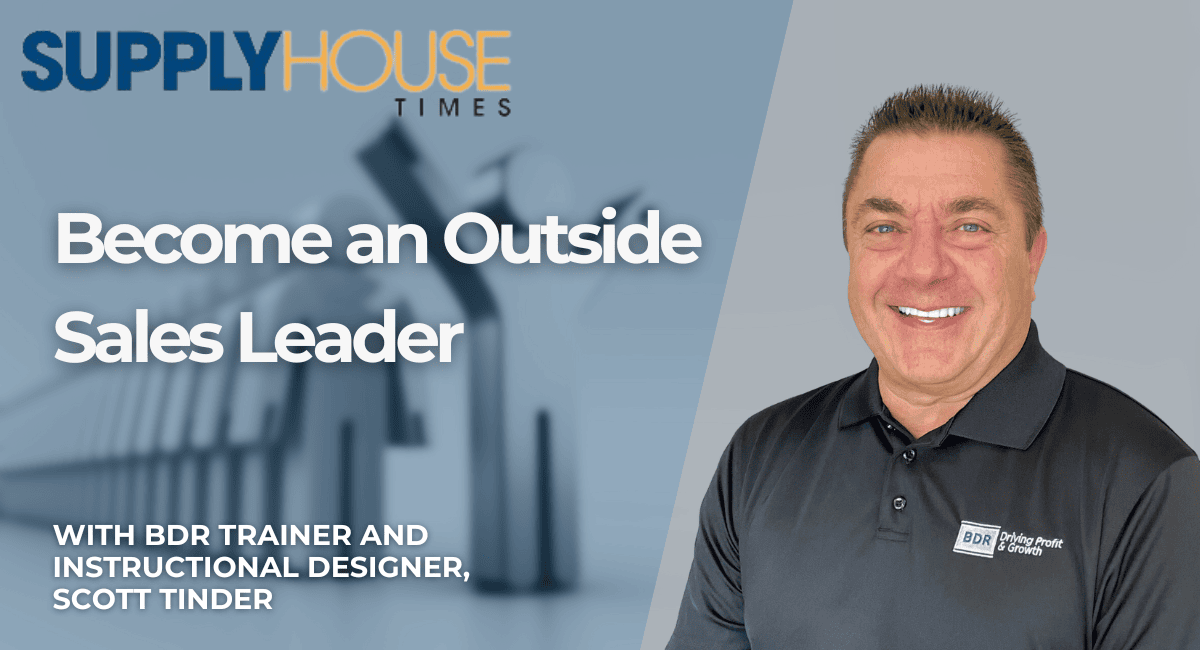Become an Outside Sales Leader

Whether you call yourself a territory manager or an outside salesperson, you’re an important link between manufacturers and the contractors that need their products. But how do you go from being good to great? How do you excel?
Setting yourself apart from the competition has little to do with the actual products you sell. The defining characteristic of a great outside salesperson is simple: They know each of their customers at an individual level and provide value to that relationship.
Every time you make contact with a customer, you must deliver value. You might think your job is to sell products, but that’s just the end result. Your role is to build relationships and communicate the value you and your company bring to the customer every single time. This means knowing which of your products or services apply to any individual customer based on what they want and need. If you don’t know your customer — if they’re just a name — and you’re trying to push a product on them they have zero use for, you’re offering nothing useful.

Simply pushing product on a customer devalues you. A contractor has any number of suppliers they can buy from, so why should they purchase from you as an individual and as a company? Every customer is unique, and you can’t sell them a product if you don’t know their needs. It’s never one size fits all. If you don’t know your customer in and out, it’s going to be a very tough sell.
Relationships Matter
To be effective, an outside salesperson must know everyone. When you’re calling on a contractor, you need to develop deeper relationships within the company besides just the owner. Over time, positions and personnel change; you never know who might be promoted internally. Establishing a wide range of contacts is essential.
To succeed, you’ve got to get to know the gatekeepers — the people within the business who can help facilitate your efforts or block you. The problem is you don’t always know who they are. A key rule in working through this process: always be friendly to everyone you encounter at the business. Make an effort to learn their first names and know what their roles are.
As a coach, I’ve gone on joint sales calls with territory managers who ignore people as they walk through the business to see the owner. Not good! That person you just walked by without acknowledging might be the next purchasing agent for the company, and now they don’t like you. I know this from firsthand experience. I once lost a very large account because I didn’t have those relationships built, and jobs changed at the company. Over one weekend, I lost half a million dollars with a business, and it took me a full year to get it all back. I only made that expensive mistake once.
Never forget to say thank you and show appreciation for their business. You think that would be simple, but I’ve watched it not happen all too many times.
A Customer Advocate
A great outside salesperson also must communicate very well, both internally and externally. Not only do you have to communicate well on the outbound messaging to your customers, but you also have to turn around and communicate extremely well to your own company. You are the customer’s advocate, representing their needs and striving to provide value. Selling is a byproduct of the value you provide the customer. It’s the result of hard work done on a personal and professional level to be of true service to contractors. By helping meet their needs — and helping meet needs they hadn’t recognized before — the sale will happen naturally.
About the Author
Scott Tinder is a trainer and instructional designer at Business Development Resources (BDR), the premier business training and coaching provider in the home service industry. Scott has over 30 years of experience in the HVAC industry at the dealer, distributor, and manufacturer levels. He has a passion for helping companies and individuals he works with implement and achieve higher levels of success in their business. Learn more about BDR at www.bdrco.com.
Read the article by BDR Trainer and Instructional Designer Scott Tinder in Supply House Times.

